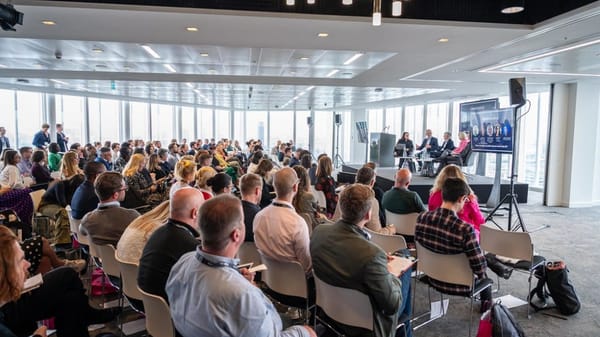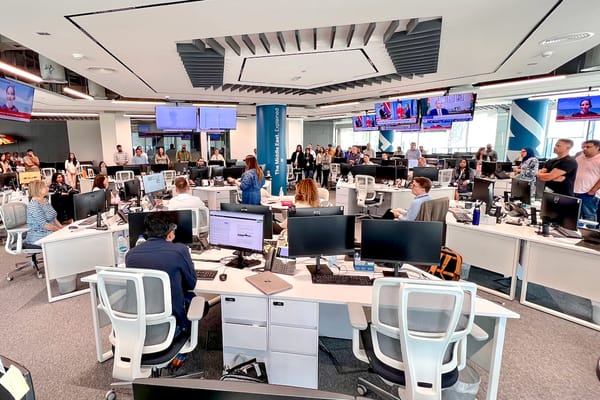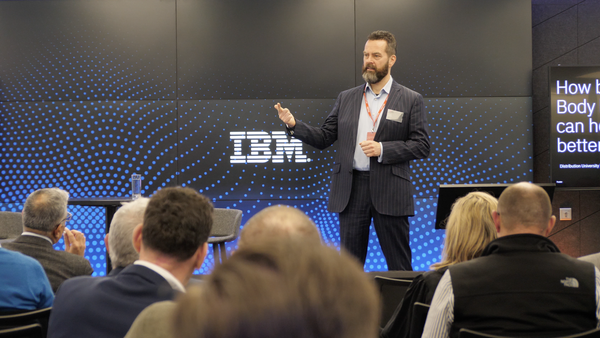This article was migrated from an old version of our website in 2025. As a result, it might have some low-quality images or non-functioning links - if there's any issues you'd like to see fixed, get in touch with us at info@journalism.co.uk.
Before the pandemic, media events were gathering pace as a way for news organisations to meet and engage with their readers, and cash in on the experience.
When Orson Francescone joined The Financial Times in late 2019 as the managing director of its media events business FT Live, he had a portfolio of physical events planned out.
But the pandemic had other ideas. In a podcast with Journalism.co.uk, he talked about how he was forced to rethink his strategy as the world went into lockdown. Like for many of us, the alternative came in the form of virtual events on Zoom and other digital event hosting platforms.
There used to be something here that couldn't be migrated - please contact us at info@journalism.co.uk if you'd like to see this updated!
They proved an instant hit after the survival instincts kicked in. FT Live first event was a small webinar called the Global Economic Emergency. The one-hour session drew in 8,000 registrations.
"That was a real lightbulb moment that maybe there was something in the digital space," says Francescone.
In just four weeks, the publisher put on its three-day event Global Boardroom, featuring 120 speakers from former prime ministers to governors of banks. The Boardroom had 25k registrations by end of day one; 50k by the end end of day three.
FT Live has since decided to price up all of its events since only half of the registered attendees ultimately ended up turning up to free events (compared with the 80-90 per cent who show up for paid events). In the case of the Boardroom event, four weeks were not seen as a sufficient run-up time to draw in a big enough paid audience.
Fast forward to September 2020 and FT Live had put on 200 digital events with a combined reach of 250k delegates. That is a tenfold increase from the 25k that physical events used to fetch annually.
Two contributing factors were the price point, which is considerably lower. Its recent Future of News conference was priced at £299, where bespoke B2B physical events could cost between £3,000-4,000. There is also the global reach: delegates from Papa New Guinea to Argentina have been able to tune in, which would have been hardly possible otherwise.
"That's incredibly exciting for a news organisation and especially one that is subscription-based like the FT," says Francescone.
Of those 250k delegates, only a quarter were subscribers. That means digital events reached 187.5k non-subscribers in 2020, who can be targetted with further subscription deals and offers.
In a physical world, around 20 per cent of delegates would convert to subscribers three to six months after attending an event. FT is now conducting a similar experiment on virtual events. While the findings are not yet final, it seems that virtual events are "as good [for conversions] if not even stronger."
From a financial perspective, event revenue in 2021 is tracking ahead of both 2020 (first year of virtual events) and 2019 (fully physical events).
We never want to lose track of our global audience. - Orson Francescone
"Our events business could end up this year bigger than it ever was in a physical events year - and that’s pretty mindblowing," says Francescone, adding that he puts the growth down to the strength of the brand, its commercial partnerships and an agile mindset of testing and learning. He claims that the so-called Zoom fatigue has not been an issue.
"The two strategic drivers were speed and chasing customer value. I knew that moving fast and quick was very important to give a signal to the market, our readers and commercial partners at the FT."
Like other news organisations, it is now thinking about how to operate an effective hybrid model with the best of both virtual and physical worlds. After all, not everything about virtual events is smooth sailing: from speakers stuck on mute, to the tired format of panel discussions, to networking just not being the same on a screen.
Its FT Weekend Festival is a flagship event and is returning to Kenwood House in London in September. But people can also tune in online if they prefer.
"We never want to lose track of our global audience," adds Francescone. "Even when we do go back, that digital element will not go away."
The events team is trying to improve the networking element for online audiences, but having both options provides appealing price points for those who want the physical experience, or are happy to dip in and out of sessions while at home.
Some have questioned whether online talks and workshops really make sense to be live: it could be needlessly confining your audience to a time and date when they could just watch the talks when it works best for them. But while on-demand videos are handy to catch up on missed talks, FT Live still wants to have a date in the diary to create hype around.
Want to receive journalism news and job updates straight to your phone? Subscribe to Journalism.co.uk on our Telegram jobs channel for the latest job opportunities, and our news channel for a weekly digest every Monday morning.






